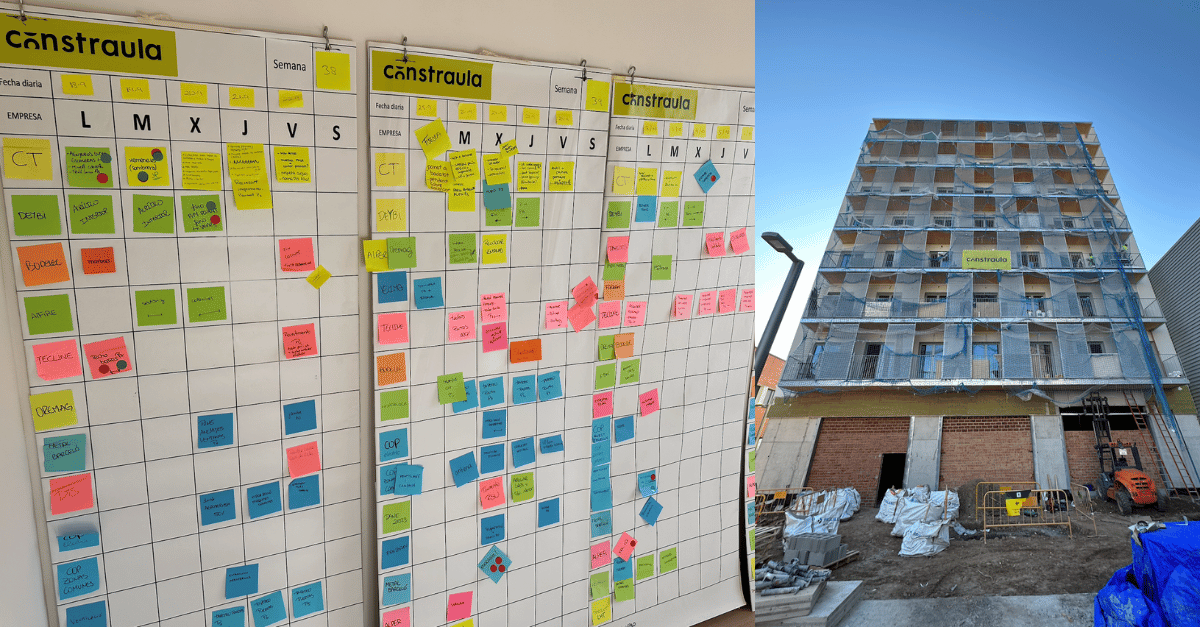
Can a company be considered lean if improvements result in layoffs?
FEATURE - Can a company be considered lean if its improvement efforts result in layoffs? The author answers this frequently asked question drawing from his own experience dealing with organizations.
Words: Michael Ballè
Too many businesses use their so-called “lean program” to justify headcount reductions or “restructuring”.
We must first distinguish two cases: executives who run a lean program as they would any other productivity initiative, without much insight into what lean really is and with the explicit aim of get rid of people (from a lean perspective, this is self-defeating and silly and, sadly, very common), and executives who fully understand and are deeply committed to lean, whose efforts still result in layoffs.
So what happens in these cases?
Before we answer this, we must understand what the reason for the layoffs is.
In tough economic times, it takes all the productivity you can find to maintain your profits (and sometimes to stay out of the red). There are two possible reasons for this - and in both cases, action is urgently needed.
Customers may feel the pinch of hard times on their wallets and, consequently, get pickier about what they buy. Either your competitors’ value/cost trade-off is more attractive (bad, but solvable), or your offering is going out of style (really bad).
Or maybe, when things were good, you made investments that added structural fixed costs to your business without reducing the planned variable cost (which you were counting on) and are now stuck with both the costs related to the investments and those the investment should have reduced. Here’s an example.
Imagine a post office that invests in large mail sorting machines right around the time when the Internet is booming. With much documentation, such as invoices, shifting to e-format, the post office attempts to improve its productivity anticipating a shortfall of people (calculated on historical volumes) by reducing sorting cost of each letter through a massive centralized investment.
As volumes drop rapidly, the only way to justify the ROI of the equipment is to increase the catchment area, so letters are now brought in from further afield to be sorted quickly in the machines - and local manual sorting centers are closed.
As a result, a letter’s lead-time goes up and customer satisfaction goes down, regardless of any attempts to lower the price per letter.
In a situation like this, you find yourself stuck with a product becoming obsolete, a massive investment to justify and all the people who were there previously still there. So why not firing people, right?
In similar scenarios, it’s tempting to turn to a “leaning” initiative to adjust resources to volume. However, this has nothing to do with the spirit of lean. But it happens, and you will always find a consultant happy to sell you such a “solution”.
So what is lean really about?
In John Shook’s words, it is an explicit method to:
- Create products/services that benefit society by providing value for money to customers…
- So that companies make a sustainable profit in order to continue doing 1)…
- By developing people so that they learn to do 1) and 2).
The first implication is that the most important lean objective is to generate a flow of new products/services customers like (and therefore purchase) at a reasonable price.
The second implication is that this flow of new products/services has to be sustained productively.
Consequently, the third implication is that employees need to be trained at specific skills in order to achieve the two previous endeavors.
Let’s assume a company does know how to come up with a stream of new offers markets are willing to try. The mass-production temptation is to create a whole new production process for each new product, scoping and sizing this new process with volume assumptions.
I’ve personally worked with a plant devoted to making components for one specific model on sales volume guestimates.
As it turned out, the average volume was guessed correctly, but for only two weeks out of the entire product life cycle. At first, the car sold far less than anticipated (so the factory was too expensive because it was under-utilized with huge fixed cost), then for a long and very intense period of time it sold far, far more (so the factory was too expensive because it was overburdened with many exceptional costs), and then sales crashed again.
Overall, the average sales estimate was correct, but the factory was never sized to actual sales volume and became a financial disaster, no matter how hard everyone worked to make it more flexible.
Lean helps to develop production flexibility so that several products can be made on the same fixed costs. That way, as a new product is introduced in existing facilities, a company can respond to variable customer purchases (one day they buy many of one product, one day of another) with flexibility. On the shop floor, this entails multi-product, multi-process cells with highly skilled cross-trained operators. Not easy.
But still, the demand for all products can vary in volume and a lean company must also adapt to these changes by modulating the pace of production. When volume goes up, pace increases. When volume goes down, pace decreases. A lean company seeks productivity by having more people in the same cell when volume is up and less when volume is down.
The assumption is that, according to the law of large numbers, if volume is down in one cell, it will be up in another, so the total number of people needed will remain relatively constant.
The problem of course is that, first, none of these skills are easy to master – they require daily kaizen hard work to train people at being flexible – and secondly, sometimes changes in customer taste or market swings are much faster and larger than a company can cope with. And there is nothing you can do about it.
Right after the Lehman Brothers debacle, I saw many businesses where sales simply dropped. People just stopped buying. In such cases, you witness the limits of your flexibility and there’s only so much you can do to survive. Sales may be vanity and profit sanity, but cash is reality and if no cash comes in, sooner or later you won’t be able to pay your people.
And so there we are.
Even with the best-intentioned lean executives, there are cases where a company’s offering simply doesn’t match customers’ taste anymore, and all the people who have spent their working life making that product or delivering that service can’t (sometimes won’t) learn to do something else overnight. Sometimes, market swings are such that even the best lean tricks (like pulling people from the lines to get them to do kaizen) are not enough to tackle a volume crunch, and sooner or later it’s either letting people go or going bankrupt.
When in a tough spot, I believe the ultimate difference between fake lean and real lean is leadership intent.
With the former, leadership intends to use lean as an excuse to get rid of people because it’s convinced that’s the only way to save the company.
With the latter, leaders know that laying people off will break mutual trust and ultimately lead to demotivation, but are still faced with the fact that their best efforts to come up with new products, increase process flexibility, and re-train and cross-train staff are not enough to deal with the severity of the crisis.
In this case, there will be lay-offs, but the company can still be called lean.
Lean is not a dogma, but a method to help an organization to remain profitable.
In today’s business environment, the pace of external change (think about technology) is generally faster than that of internal change. Lean activities aim to develop an employee’s ability to contribute to creating new, attractive products, to be part of a more flexible working environment, to improve productivity, and to lower costs. But there are times when, no matter how hard you try, the learning curve the market presents you with is just too steep and tough calls will have to be made.
Hopefully, this is a last resort.
THE AUTHOR

Read more


FEATURE - The author explains how a recent book on radical quality improvement in manufacturing inspired him to initiate similar experiments in his software development firm.


CASE STUDY – Thanks to Lean Thinking, this Spanish construction company was able to deliver a challenging project in one year, well ahead of schedule. Here’s how they did it.


FEATURE - Norman Faull, Director of Lean Institute Africa, talks about a supplier development project the institute took part in, and shares a few of the results achieved.


INTERVIEW – How many times have you been asked, “What is the ROI of lean?” Jean Cunningham provides her insight to help you measure the financial impact of your lean improvements.

